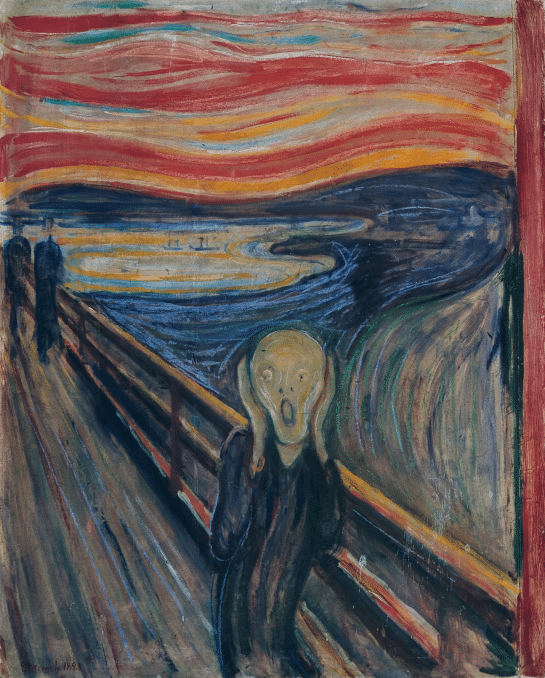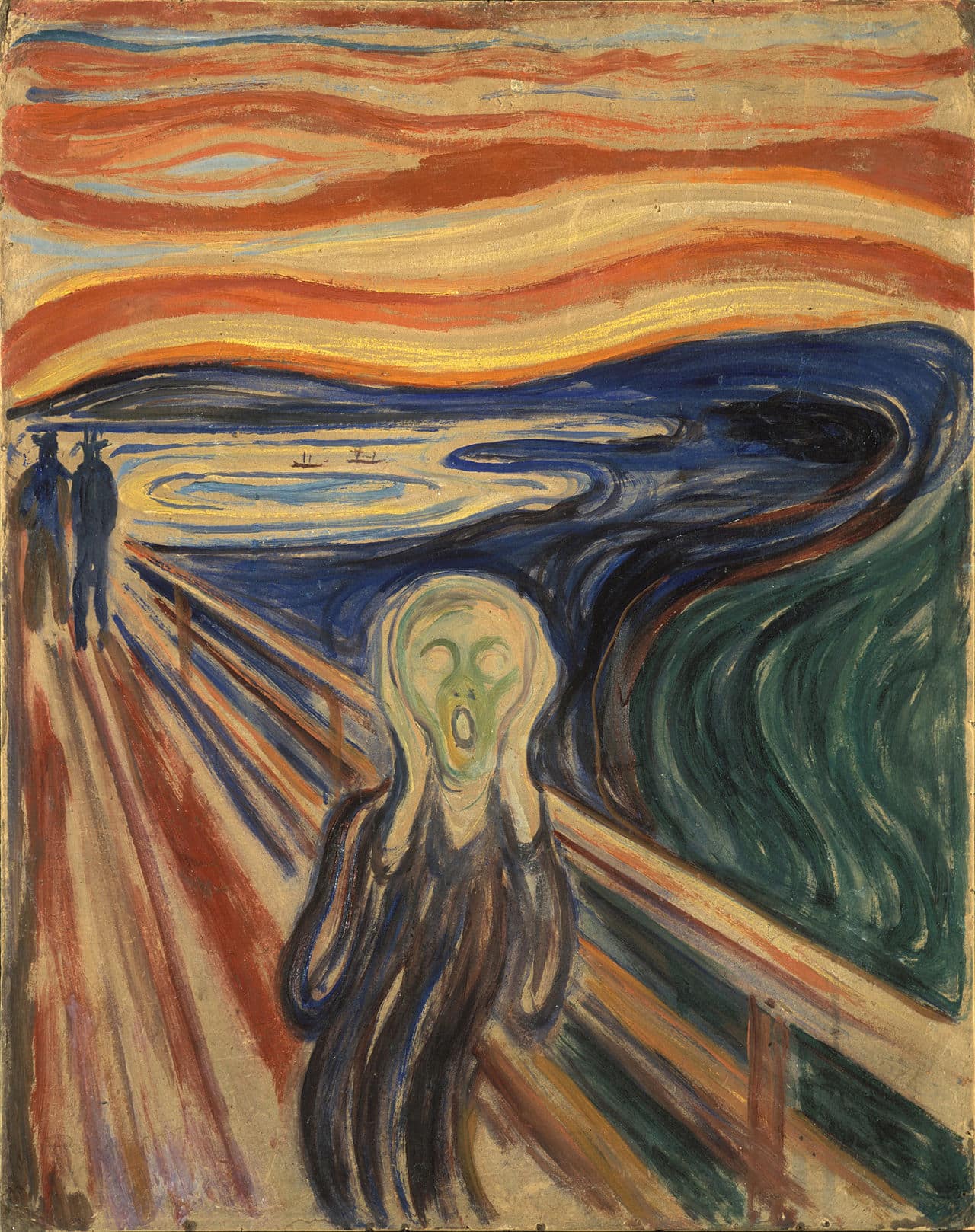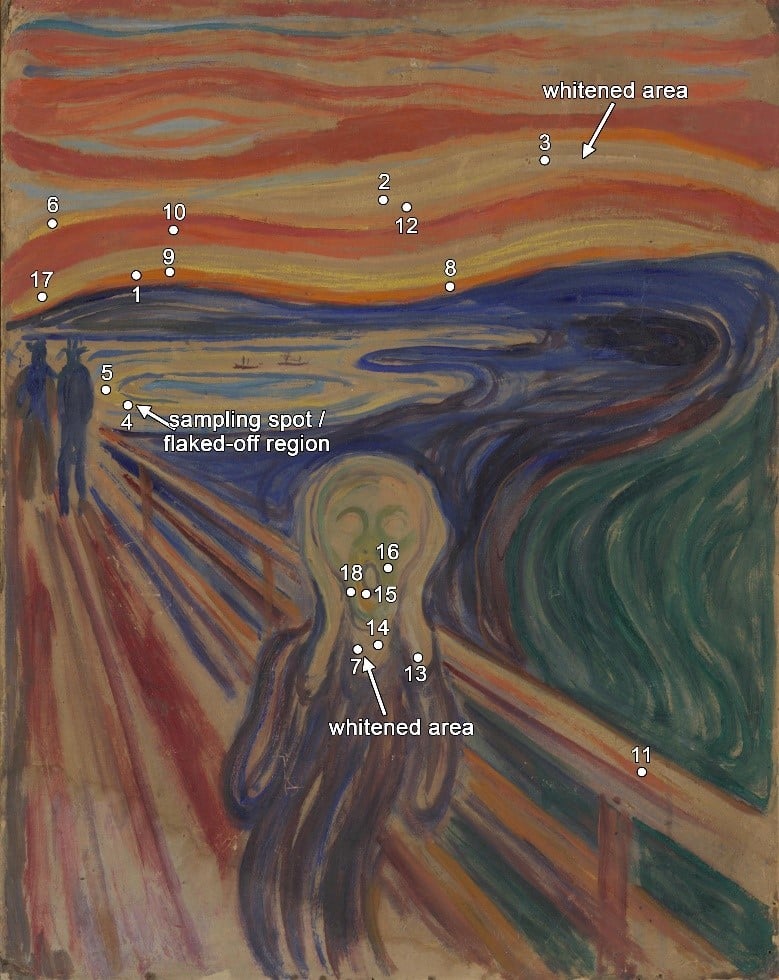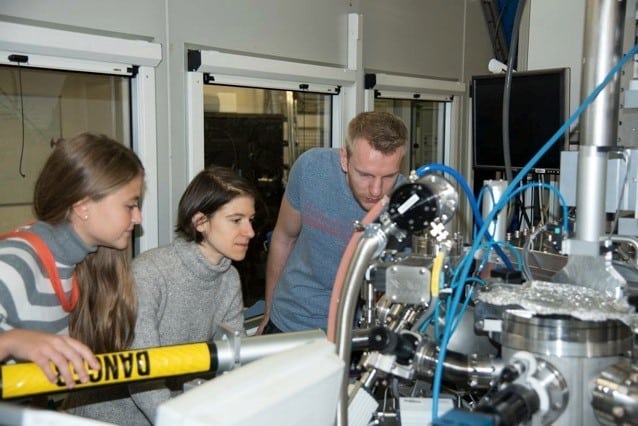Antwerp University Examined Crumbling Paint of The Scream
An international team of scientists, including some from the University of Antwerp, have examined the damage to The Scream
in detail. Edvard Munch’s masterpiece shows water damage and the yellow paint is crumbling. Based on the research results, the Norwegian museum has decided to conserve the painting in a more appropriate way from now on.
The Scream by the Norwegian painter Edvard Munch (1863-1944) is a world-famous painting that expresses human stress and despair like no other work of art. In fact, there are a number of versions of The Scream: two paintings, two pastels, several lithographic prints and a few drawings and sketches.

 The Scream (1893) - The Scream (1910?)
The Scream (1893) - The Scream (1910?)© Wikipedia
The two most well-known versions are the paintings that Edvard Munch created in 1893 and 1910 (?). Each version of The Scream is unique. Munch experimented to find the exact colours to represent his personal experience, mixing diverse binding media (tempera, oil and pastel) with brilliant and bold synthetic pigments to make ‘screaming colours’. Unfortunately, the extensive use of these new coloured materials poses a challenge for the long-term preservation of Munch’s artworks.
The 1910 (?) version of The Scream, belonging to the collection of the Munch Museet (Oslo, Norway, was stolen in 2004 and was only recovered two years later. During that period, the painting suffered from water damage, as is clearly visible in the lower-left corner. But there is more going on. Slowly the yellow paint is crumbling and fading in the sunset, near the lake and the neck of the desperate figure.
A multinational team of scientists from Italy, Belgium, France, Germany, the USA and Brazil examined the painting to determine the causes of this degradation.
 Photograph of The Scream (1910?)
Photograph of The Scream (1910?)© Munch Museum, photo: Irina Crina Anca Sandu and Eva Storevik Tveit
Loose paint flakes
The team first examined the painting at the museum in Oslo using a combination of non-invasive spectroscopic methods. One of these was macroscopic X-ray fluorescence, a method developed by the University of Antwerp.
‘The technique makes it possible to visualize the distribution of chemical elements such as cadmium, mercury and chlorine over the entire surface of the painting’, explains Prof. Koen Janssens (UAntwerpen). ‘In this way, we were able to determine that part of the cadmium-yellow paint is rich in chlorine compounds and that it is precisely in these places that the paint is damaged. The chlorine is probably a surplus from a carelessly carried out industrial production process at the beginning of the 20th century, a process based on cadmium chloride.’
 Dr. Gert Nuyts (University of Antwerp) and two Italian colleagues during measurements of cadmium yellow micro-flakes of The Scream (1910?) at beamline ID21 of the European Synchrotron in Grenoble.
Dr. Gert Nuyts (University of Antwerp) and two Italian colleagues during measurements of cadmium yellow micro-flakes of The Scream (1910?) at beamline ID21 of the European Synchrotron in Grenoble.© ESRF, Grenoble, France
In a subsequent research phase, a few minuscule yellow paint flakes that had become detached from the painting were examined using very intense and microscopic X-ray beams. Janssens’ research group has a great deal of experience with this.
Janssens: ‘These measurements took place in the synchrotrons of Grenoble and Hamburg and aimed to better understand the chemical transformation that the yellow paint had undergone spontaneously during degradation. The bright yellow cadmium sulphide appeared to be oxidized to colourless cadmium sulphate, which explains the fading of the paint. We observed this spontaneous transformation earlier in paintings by other famous artists of the same period, such as Vincent Van Gogh, James Ensor and Henri Matisse.’
Air humidity too high
Usually this fading phenomenon is attributed to light: it is a consequence of the same process that converts light into electricity in solar cells. In the case of The Scream, however, researchers were able to demonstrate that it was primarily the high humidity of the air that caused the yellow paint in The Scream to crumble and fade, rather than the incident light.
In the course of 2020 (albeit postponed due to the corona crisis) the Munch Museum will move to a new building. Based on the results of this study, the museum managers will ensure that The Scream will be kept at relatively low relative humidity (45%) but normal lighting, in order to slow down or stop the ageing process of the yellow paint as much as possible.
 The new Munch Museum in Oslo, under construction in June 2019.
The new Munch Museum in Oslo, under construction in June 2019.© Wikipedia












